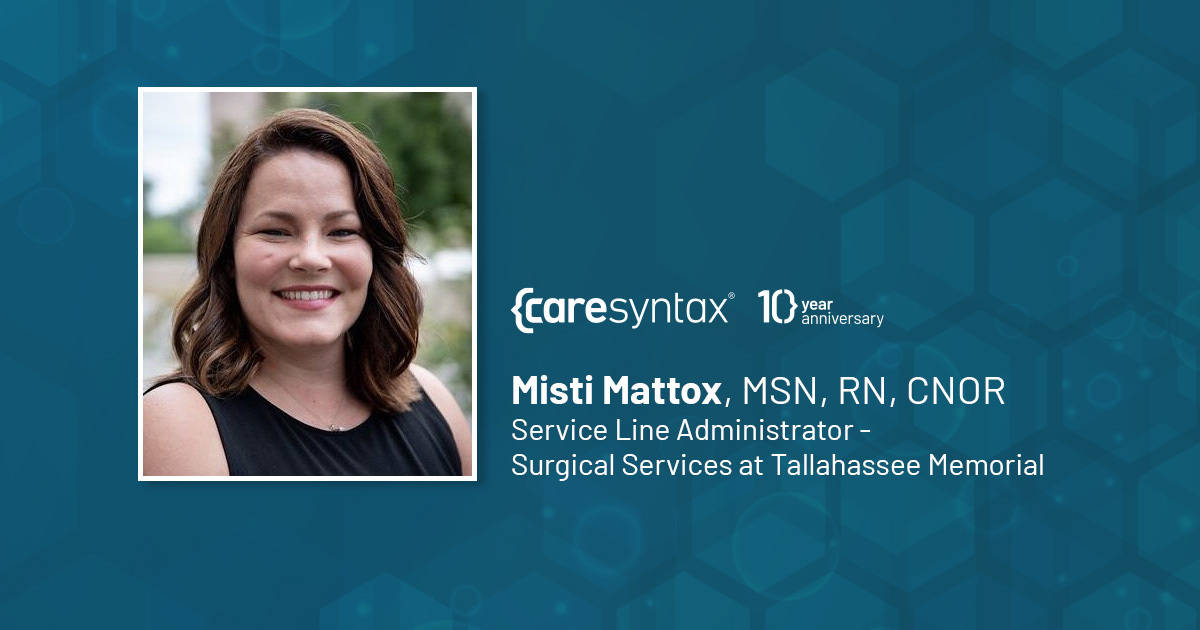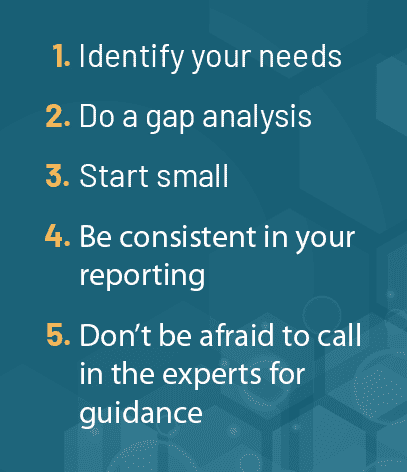
Blog
Data-Driven Surgery: 3 Keys to Transformational Change in the OR
Learn More

Caresyntax Blog
August 11, 2023
Caresyntax interviewed Misti Mattox, Service Line Administrator at Tallahassee Memorial HealthCare in Florida. Mattox was one of the early adopters of operating room (OR) data and cohort analysis to gain valuable insights to improve performance.
In this article, Mattox shares five tips for OR managers who want to leverage data to gain important insights into improving efficiency and performance: Identify your needs, do a gap analysis, be consistent in your reporting, and don’t be afraid to call in the experts for guidance.

Identify Your Needs
To identify what objectives you want to accomplish, Misti recommends that you ask yourself: What are the most complaints about? What do you hear from the surgeons? What do you hear from the staff? What are you hearing from your patients? That will help you identify your priorities for improvement.
Do a Gap Analysis
“Step two is to perform a gap analysis, says Mattox. “What you need to do is you need to identify your barriers and outliers and focus on that.” When you can identify surgical variability, it lets you diagnose the root cause analysis, implement behavioral changes, and sustain the improvement with positive feedback loops.
Start Small
“When starting your data-driven journey, it is important not to be too ambitious,” says Mattox. “If you try to say, we’re going increase efficiency by getting in the room on time, having a great turnover, making sure the In-to-Cut is good, [and] making sure surgeons are happy…you’re going to fail every time.”
Start with smaller, more achievable objectives first; there will be lots of time later to expand what you can achieve, but you don’t want to get overwhelmed by taking on too much, too soon.
Be Consistent in your Reporting
One of the most important things when reporting on your OR data, is to be consistent in the numbers you are reporting. “I’m very careful to be consistent in what I report,” says Mattox, “and that way they know when I report something bad, that it’s accurate. When I report something good, it is accurate.” She is very careful to only have a small group of people who control the data, so she can eliminate bias and create objective reports.
Take Advantage of Strategic Consulting and Professional Services for Data Insights and Management
At the annual Caresyntax Customer Summit, Misti was able to learn how to leverage the strategic insights of the professional services team. Caresyntax consultants were able to help Misti clean up her reporting, populations, and data fields, so she now feels confident to pull up a report, just click, and print.
“What I would say to administrators like myself is: if you could ever just fall in love with numbers like I have, you can turn efficiency into dollars very easily, and the more efficient you are, the more money you are making for your organization,” says Mattox.
“When you can optimize the profitability of your organization — that leads to being able to improve the compensation for her hardworking staff,” Mattox says.”What I would say for administrators like myself is: if you could ever just fall in love with numbers like I have, you can turn efficiency into dollars very easily, and the more efficient you are, the more money you are making for your organization.”
Running an OR is big business. Efficiency and profitability are linked outcomes. For Mattox, being more profitable is the only way she is able to pay nurses and techs what they deserve.

“Nobody wants to work in chaos, no matter how much you pay them,” says Mattox. “So data helps control the chaos a little.”
Cash-strapped hospitals have to look for other ways to compete outside of compensation, and that can be something as simple as controlling the chaos in the OR.
Mattox believes that having a reputation for an efficient, profitable, and well-run OR will help attract top talent.
“Use data to your advantage, become the most cost-effective, most efficient OR in your area, so you can be the one that everybody wants to work for,” says Mattox. You are going to have a line of people wanting to work for your organization because it is streamlined and consistent, and it’s not chaotic. Nobody wants to work in chaos, no matter how much you pay them, so data helps control the chaos a little.”